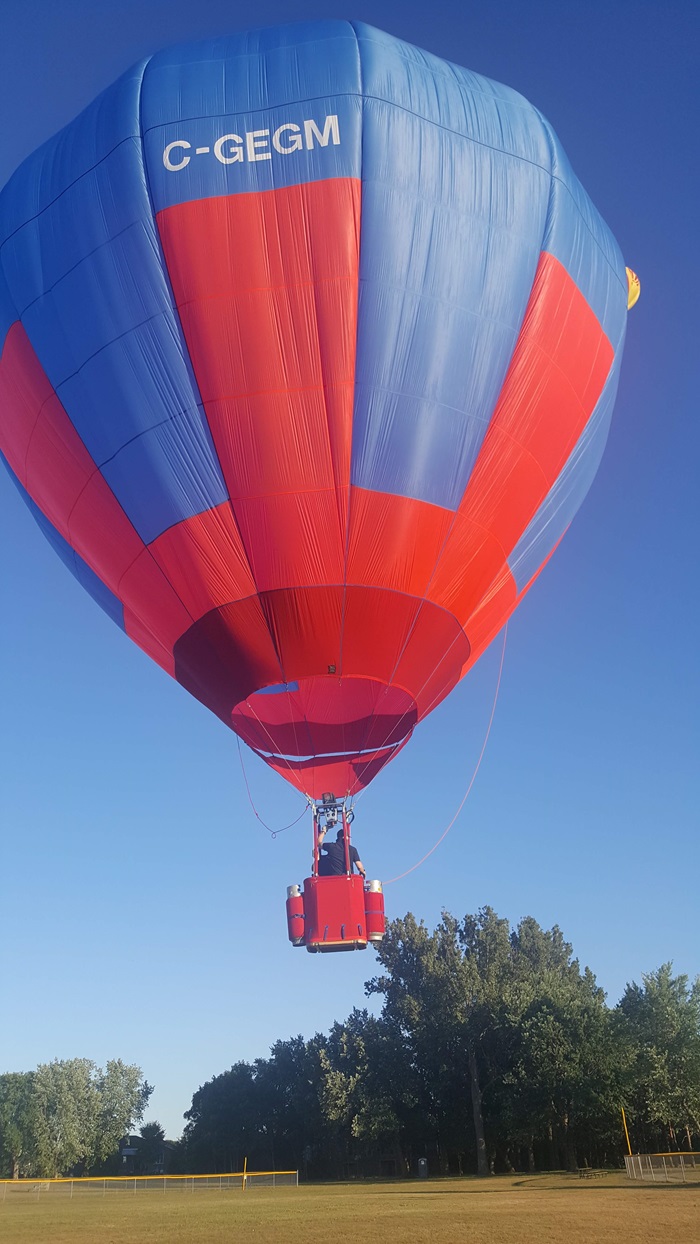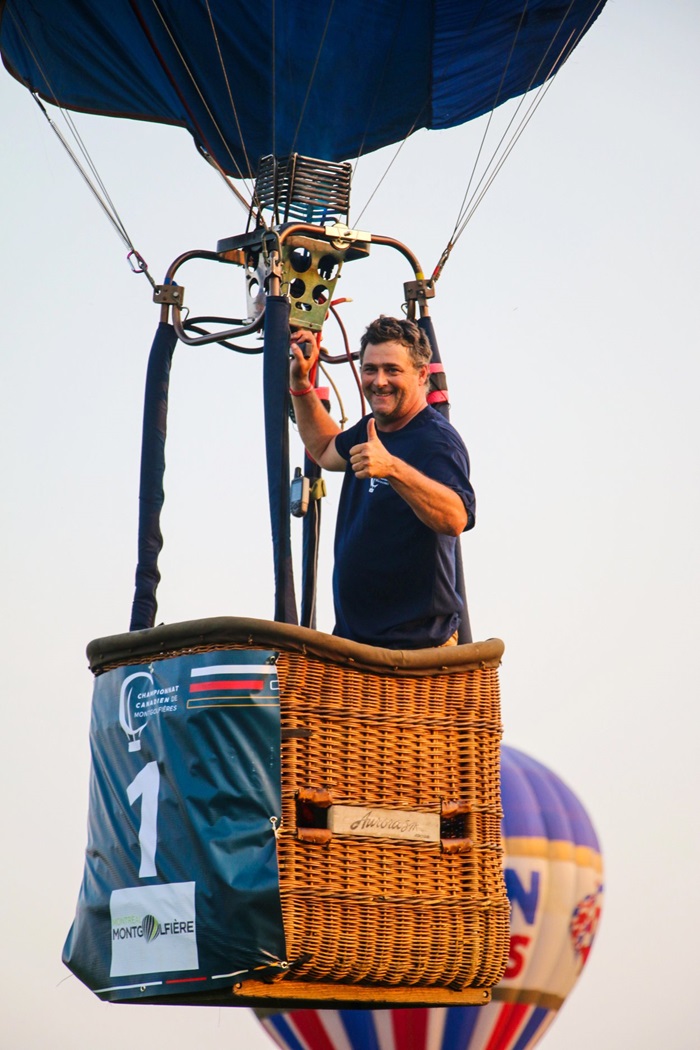Beginners guide to organising a ballooning competition Part 2: Teamwork

By Jonathan Perron-Clow, Deputy Director 2021 and 2022 Canadian Hot Air Balloon Championships, and Member of the FAI Ballooning Commission (CIA) Public and Media Relations Sub-Committee
This article is the second in a four-part series, which aims to provide beginners with a simple guide to organising competition ballooning, written by an event organiser who started as a beginner! The series tracks the story of organising the 2021 and 2022 Canadian Hot Air Balloon Championships with commentary on the planning, the requirements, the challenges overcome and the lessons learned along the way. There are many people who could provide a more structured account and who have organised much larger events, but I am writing this precisely to show that you don’t need to have all the knowledge together at the beginning.
- Read Part 1: Balloonists
- Read Part 3: Location
- Read Part 4: Resources

Competition didn’t work in Kemptville, but following our efforts
balloonists were invited for a fun day of flying the next summer.
Credit: Jonathan Perron-Clow
In 2017, I tried to organise a competition in Kemptville, Ontario. My aim was to link it to an existing event in the community. The local community group and town council were interested, but ultimately it never got off the ground. Why? I didn’t want to involve too many people too early and I didn’t have the knowledge or energy to carry the work to completion.
- Lesson: Having the right people at the table from the get-go will go a long way to making your event a success
Organising a hot air balloon competition is a lot of work. I have compared it to being a conductor preparing an orchestra for a performance: you don’t get to make the music yourself, but you get to be centre stage to enjoy it.
Start strong
It is impossible to organise a successful event alone. At the very minimum, a dozen people need to be involved, including target team members. It is best not to start working alone, either. For one, it does not lend itself to much credibility with many community members (how often are they approached with wacky ideas from individuals?!) and secondly, it then takes a certain amount of time to bring people on board should there be positive traction.
There are two sets of people who need to be involved and while there can be overlap, it’s important to not burn out your volunteers.
The two teams
- Organisers with a diverse skill set
- Ballooning officials who can advise on building a successful event
A committee should come together to help organise the various functions of the event. They could be local to the area where you’d like to hold the event, or balloonists who have organising capacity. Six to ten people is manageable. More than that, it is wiser to have sub-committees.
covering Different skill sets
Dozens of volunteers on over a dozen committees organised a top-flight competition as part of the 1988 Calgary Olympics with over 100 balloons from around the world. But you don’t need to start that big. What you’re looking for in the core group are people who believe in the value of competition and using whatever they can offer to bring it to life, whether that’s relationships with landowners, bookkeeping or connections in the business community.
The ability to write grant requests is not a bad idea either if you’re looking to make it an annual event.
At some point early on, you need to find competent ballooning officials who can tell you what they need on the technical aspects for the event. The community might be really excited about hosting balloons, but if they can only fly in one direction and landing sites are few and far between, the event might not work as a competition. A good official can tell you that early on. They can also help to train locals to take on various tasks if there isn’t the capacity to bring members of their network for every job. It’s not uncommon even at high level events for new volunteers to serve on scoring teams as long as at least one person has good experience.
Local knowledge goes a long way
While competitive officials are willing to travel to events, local organisers only want to put in the effort to organise an event if it benefits their own community. That means it’s important to find a community that is willing to pull its weight in getting the competition in the air. In fact, this is the hardest part of the whole process because it involves finding the right people at the right time.
You will also want people who can take on the boring tasks of liaising with local and government officials to get whatever permits might be required for the event. If it’s just a fun weekend between balloonists, there might not be anything to do, but the bigger the event, the more paperwork will be involved including risk assessments, insurance and permitting. This cannot be ignored or wished away!
As the event gets closer, you’ll need to involve other local volunteers as target team members and potentially for other roles like security or even crew for visiting pilots.
Building momentum
Ultimately, what made all the difference for us was finding champions with real clout to get things moving. I’ll mention them by name: Sylvain Tremblay, Michel Auzat and Garry Lockyer.
In 2020, once pandemic restrictions started cancelling all our favourite events, we jumped at organising an event, hoping that we had learned from the previous years as I’ve chronicled for the FAI. It was successful because Sylvain Tremblay, the balloonmeister of the Saint-Jean International Balloon Festival, joined to support us on weather and safety. The late Michel Auzat, one of the first balloonists in Quebec with decades of experience, also provided key advice.
I got lucky in calling tasks that pilots were able to get to, but it was their credibility that turned heads. The first was that of Garry Lockyer, who received the 2022 CIA Montgolfier Diploma for his lifetime of supporting competition ballooning the world. When I saw him a few weeks later, he said he’d do whatever he could to help us push the envelope. The Saint-Jean Festival itself then got involved, supporting us with paid staff and all sorts of resources. Having the right team in place for that event in 2020 was critical for its success and what came next.

Veteran competitor Jason Adams, pictured, gave credibility to the Amicale 2020 which he won.
Out of the eight competitors at that event, two have gone to the Juniors Hot Air Balloon World Championship,
two - including him - are going to the 2024 World Hot Air Balloon Championship and
one co-piloted at the 2022 Worlds. He will be making his seventh appearance
at the FAI World Hot Air Balloon Championship in 2024.
Credit: International de Montgolfières
How to move forward:
- Gather a dedicated team of organizers
- Seek competent and available officials
- Rally local volunteers to train as officials and crew
